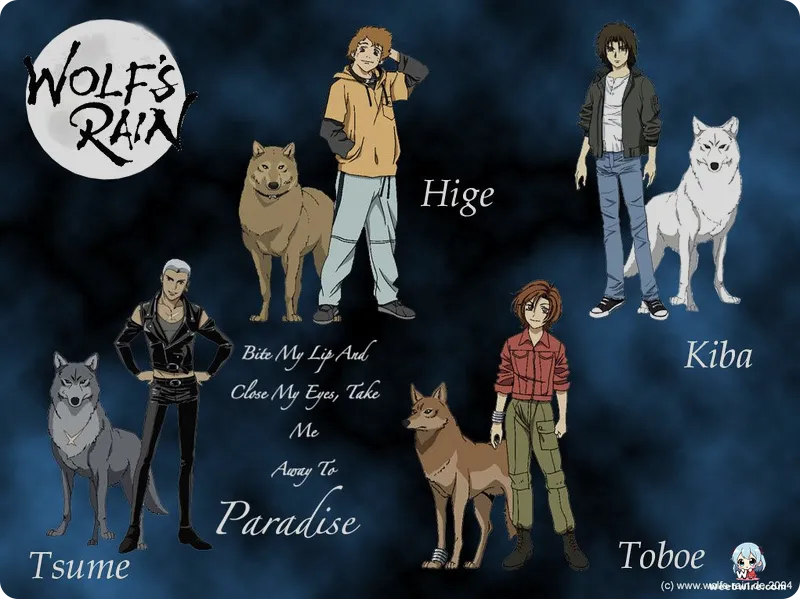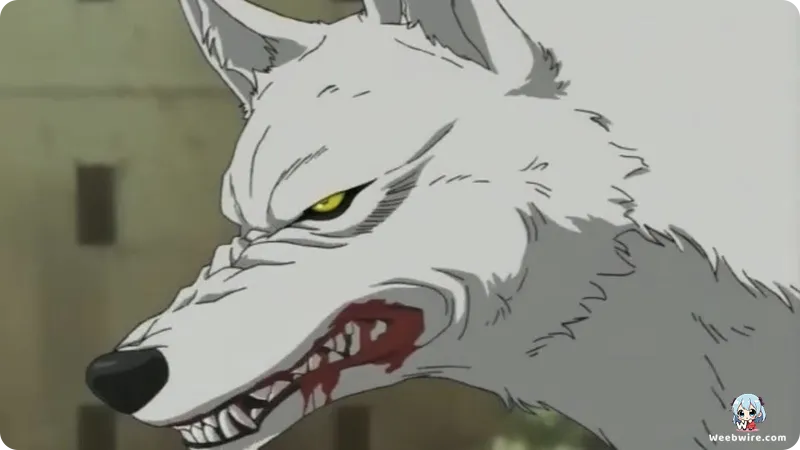Wolf's Rain Revisited: Rare Insights into the Anime's Original Vision, Iconic Score, and Production Journey

Within the vast tapestry of anime, certain creations transcend conventional boundaries, etching an unforgettable impression upon their audience. Among these acclaimed works, Studio BONES's 2003 masterpiece, Wolf's Rain, stands as a hauntingly beautiful testament to unparalleled original storytelling, profound symbolism, and a distinct artistic vision. While its desolate post-apocalyptic setting and the elusive quest for 'Paradise' are widely recognized, a wealth of captivating facts and behind-the-scenes insights truly amplify its enigmatic allure and enduring popularity.
The Power of Original Storytelling
A cornerstone of Wolf's Rain's distinct identity is its nature as an entirely original anime. Diverging from the prevalent trend of adapting existing manga or light novels, this series was conceptualized and penned by the acclaimed Keiko Nobumoto, celebrated for her pivotal screenwriting contributions to genre-defining titles such as Cowboy Bebop and Macross Plus. This creative autonomy afforded the narrative unbridled freedom, fostering a singular fusion of philosophical profundity, melancholic beauty, and raw, untamed emotion. Nobumoto's ingenious premise, a world where wolves are believed to be extinct yet covertly traverse human society in disguise, offered a refreshing reinterpretation of classic mythological archetypes. It imbued the desperate pursuit of a mythical sanctuary with a poignant exploration of identity, resilience, and hope amidst a decaying world. This foundational originality is key to its unique narrative rhythm and character evolution, allowing the story to unfold in consistently surprising and thought-provoking ways.
Yoko Kanno's Iconic Score
The auditory landscape of Wolf's Rain is as integral to its essence as its visual narrative, a credit to the legendary composer Yoko Kanno. Her involvement represents a significant highlight, as Kanno's scores often function as characters in their own right, and Wolf's Rain is no exception. From ethereal, evocative melodies to driving, rock-infused tracks, Kanno's music flawlessly embodies the anime's desolate grandeur and the wolves' unwavering journey. Iconic compositions like the opening theme 'Stray' by Steve Conte, the soulful closing theme 'Gravity' sung by Maaya Sakamoto, and the deeply atmospheric 'Cloud 9' are not mere background elements; they are vital narrative threads, intensifying emotional beats and meticulously setting the tone for the epic odyssey. The sheer scope and emotional resonance of Kanno's prolific work for Wolf's Rain solidified its position as one of anime history's most memorable soundtracks, a testament to her genius and profound grasp of the story's core themes. This score continues to resonate profoundly with fans years after its debut, frequently cited as a primary factor in the anime's lasting impact.
The OVA Conclusion
Further insights into its production reveal a lesser-known detail regarding its broadcast and release. The concluding four episodes of the series, spanning episodes 27 through 30, were initially released as Original Video Animations (OVAs) rather than being part of the televised broadcast. This decision reportedly stemmed from production delays and scheduling conflicts, which prevented their timely airing. While this may have presented a minor disruption for initial viewers, it ensured that the series' climactic resolution was delivered with the full artistic polish and narrative integrity envisioned by its creators, unburdened by the pressures of weekly deadlines. These crucial OVA episodes bring the often ambiguous and epic journey to its poignant and much-debated conclusion, showcasing Studio BONES's unwavering commitment to quality, even under challenging circumstances.
Studio BONES's Pivotal Project
For Studio BONES itself, Wolf's Rain marked a pivotal undertaking for the then-relatively nascent studio, established just in 1998. Following other notable productions like Cowboy Bebop: The Movie and RahXephon, this project further cemented BONES's burgeoning reputation for crafting high-quality, original, and often visually stunning anime. The intricate character designs by Toshihiro Kawamoto, coupled with the fluid and dynamic animation, highlighted the studio's burgeoning talent and ambitious artistic vision. Wolf's Rain became a benchmark for their capacity to navigate complex narratives and forge visually distinctive worlds, significantly contributing to their ascent as one of the most revered animation studios in the industry. The meticulous attention to detail in the wolves' movements and expressions, even in their human forms, remains a testament to the animators' profound dedication.

Exploring Philosophical Depths
The philosophical depths of Wolf's Rain offer another rich avenue for exploration. The very concept of 'Paradise' remains deliberately undefined, inviting myriad interpretations. Is it a tangible destination, a spiritual state, or simply an ephemeral aspiration? This inherent ambiguity compels viewers to engage with the narrative on a deeper intellectual plane, prompting contemplation on the nature of destiny, conviction, and the cyclical rhythm of existence. The series masterfully intertwines elements of fantasy, science fiction, and post-apocalyptic drama, weaving a complex tapestry of themes including environmental degradation, the search for meaning in a desolate world, and the intrinsic conflict between human civilization and the raw power of nature. This thematic richness is a primary reason why the series continues to inspire robust discussions and analytical discourse among its dedicated fanbase, long after its initial broadcast.
The Enduring Legacy of its Conclusion
Finally, the conclusion of Wolf's Rain is arguably its most discussed and debated element. Without divulging spoilers for those yet to immerse themselves in its profound depths, it is fair to assert that the ending defies conventional narrative structures. It embraces a cyclical framework, leaving viewers with a sense of both profound closure and expansive, open-ended wonder. This audacious narrative choice, though initially polarizing for some, has undeniably contributed to the anime's enduring legacy, sparking countless fan theories and interpretations regarding the fate of the wolves and the future of their world. It stands as a testament to Nobumoto's masterful writing and Okamura's insightful direction that the ending continues to provoke such intense thought and discussion, ensuring Wolf's Rain remains a vibrant topic of passionate conversation among anime enthusiasts. Its remarkable ability to elicit such potent emotional and intellectual responses is a hallmark of truly exceptional storytelling, cementing Wolf's Rain as a timeless animated work that continues to captivate new audiences with its unique blend of beauty, tragedy, and enduring hope.
Credits
Wolf's Rain
Author
Keiko Nobumoto
Cover Art
Toshihiro Kawamoto
Studio
bones
Publisher
Bandai Visual
Producers





